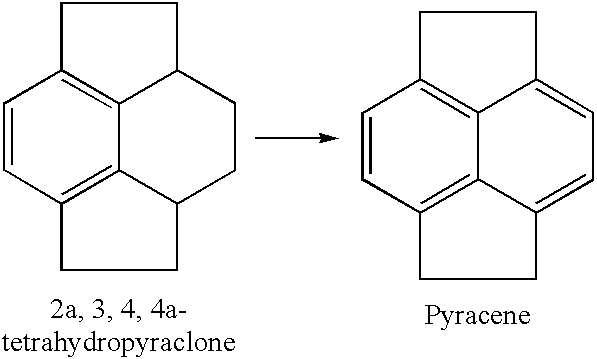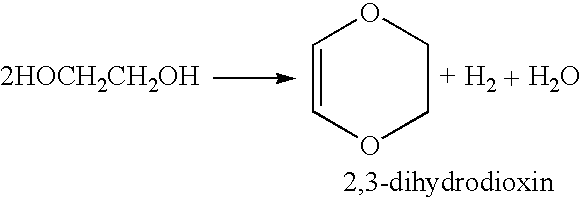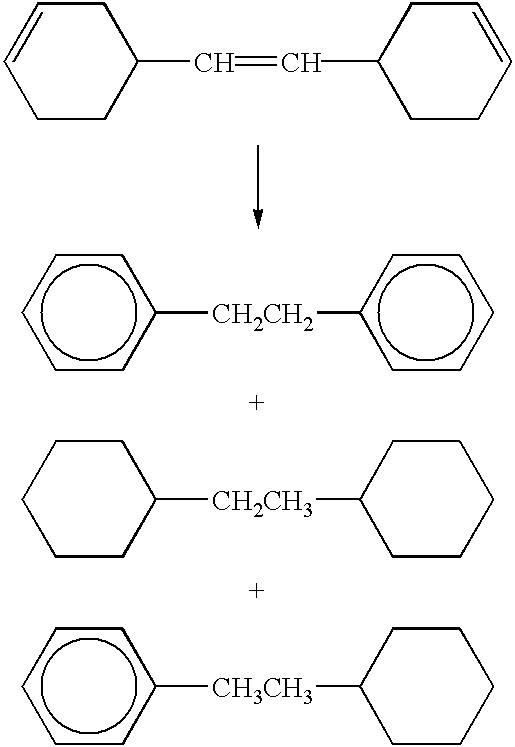Rigid porous carbon structures, methods of making, methods of using and products containing same
a porous carbon, rigid technology, applied in the direction of metal/metal-oxide/metal-hydroxide catalyst, chemical/physical process, textiles and paper, etc., can solve the problems of easy clogging and thereby deactivation of pores, cost of separation from reaction mixture, and risk of contamination of products, etc., to achieve a high-accessible surface area
- Summary
- Abstract
- Description
- Claims
- Application Information
AI Technical Summary
Benefits of technology
Problems solved by technology
Method used
Image
Examples
example 4
Preparation of a Rigid Structure from Oxidized Nanofibers
A sample was made from oxidized fibrils which were formed into 1 / 8" extrudates and pyrolized to remove oxygen. The density and porosity (water absorption) was determined to be 0.8 g / cc and 0.75 cc / g, respectively.
The sample was analyzed by Quantachrome Corp. for surface area, pore size distribution and crush strength. Quantachrome measured a surface area of 429 m.sup.2 / g. The total porosity was measured by N.sub.2 adsorption / desorption. The value determined was 0.83 cc / g (FIG. 2). FIG. 2 shows a substantial absence of micropores, (i.e., <2 nm). The crush strength for an 1 / 8 inch extruded was 23 lb / in.sup.2.
example 5
Preparation of a Rigid Structure from "as is" Nanofibers
A sample was made from "as is" nanotube CC aggregates (i.e., not surface oxidized) using phenolic resin / Polyethylene Glycol / Glycerine to hold the aggregates together. The partially dried slurry was pressed and cut into .about.1 / 4" pellets, and pyrolized to remove PEG / Glyderine and convert the phenolic resin to carbon. The measured density was 0.63 g / cc; water absorption was 1.0 cc / g.
The sample was analyzed by Quantachrome Corp. for surface area, pore size distribution and crush strength. The results from Quantachrome indicated a surface area of 351 m.sup.2 / g. The total pore volume (N.sub.2 adsorption / desorption) was 1.1 cc / g (FIG. 3). The pore size distribution showed an absence of micropores (less than 2 nm). The. crush strength from a 1 / 4 inch diameter pellet was about 70 lb / in.sup.2. According to the SEM, this structure is not homogeneous; it consists of a fairly uniform distribution of aggregates with fairly large spacings...
example 6
Preparation of a Rigid Structure Using a Gluing Agent
Pellets (1 / 4") of a composite of polyurethane containing 20 wt % BN fibrils was pyrolized at 400-800.degree. C. in flowing argon for 6 hrs to remove all volatiles. Weight loss was 70%. The resulting hard particles were reduced in volume by .about.33% and had a bulk density of .about.1.0. The particles were ground in a mortar and pestle without crumbling and sieved to 100-20 mesh. Internal void volume of the articles was measured by absorption of water at r.t. to incipient wetness and found to be 0.9 cc / g. Assuming a true density of 2 g / cc, this corresponds to a void volume of 60%.
PUM
| Property | Measurement | Unit |
|---|---|---|
| density | aaaaa | aaaaa |
| surface area | aaaaa | aaaaa |
| density | aaaaa | aaaaa |
Abstract
Description
Claims
Application Information
 Login to View More
Login to View More - R&D
- Intellectual Property
- Life Sciences
- Materials
- Tech Scout
- Unparalleled Data Quality
- Higher Quality Content
- 60% Fewer Hallucinations
Browse by: Latest US Patents, China's latest patents, Technical Efficacy Thesaurus, Application Domain, Technology Topic, Popular Technical Reports.
© 2025 PatSnap. All rights reserved.Legal|Privacy policy|Modern Slavery Act Transparency Statement|Sitemap|About US| Contact US: help@patsnap.com



